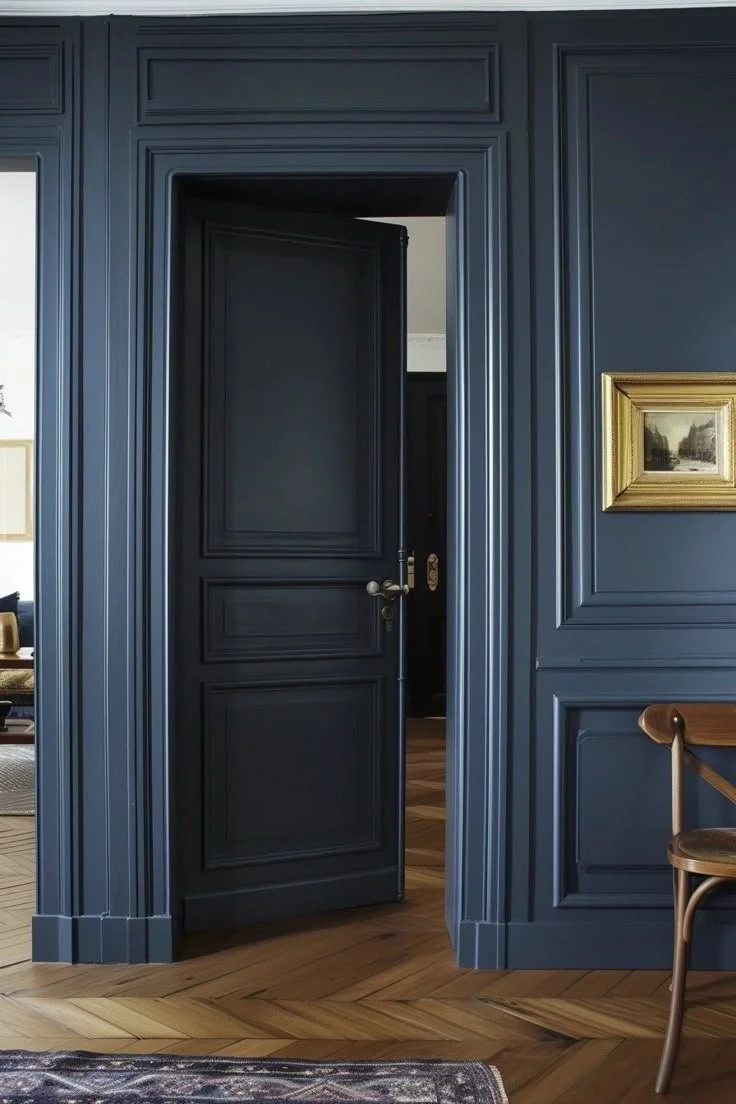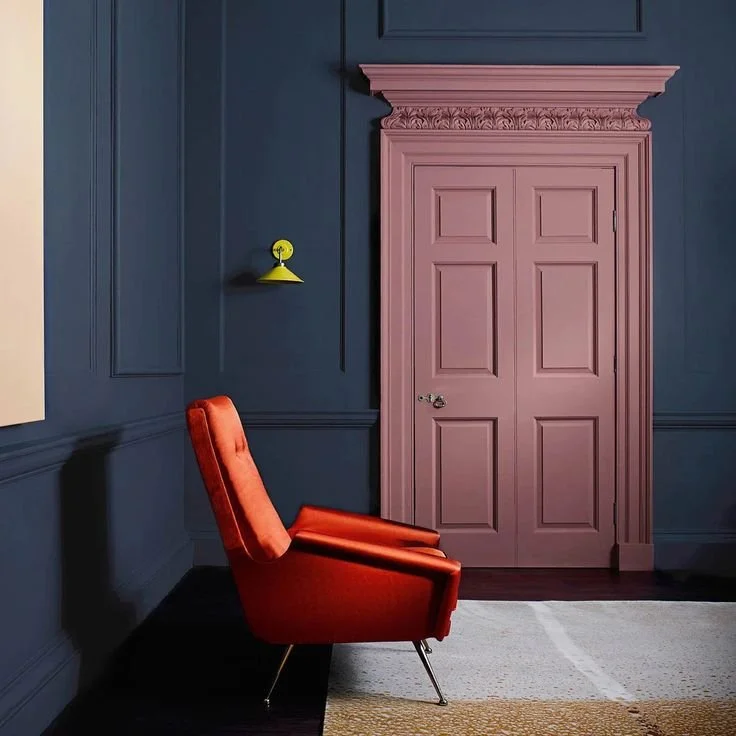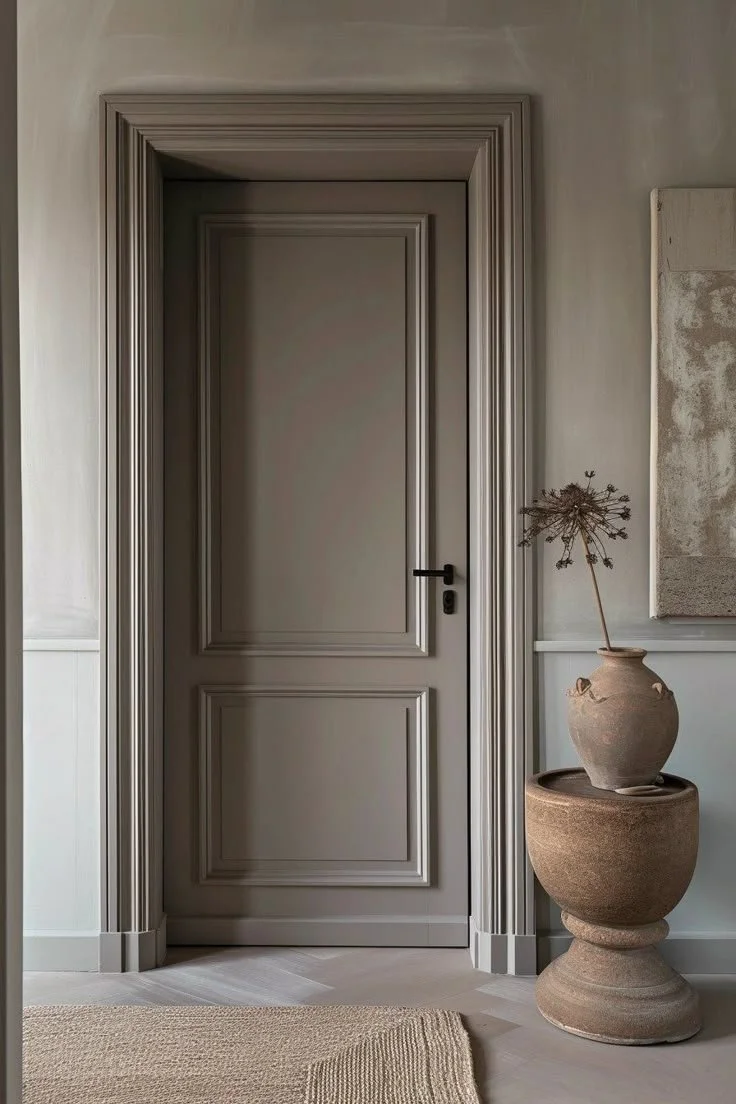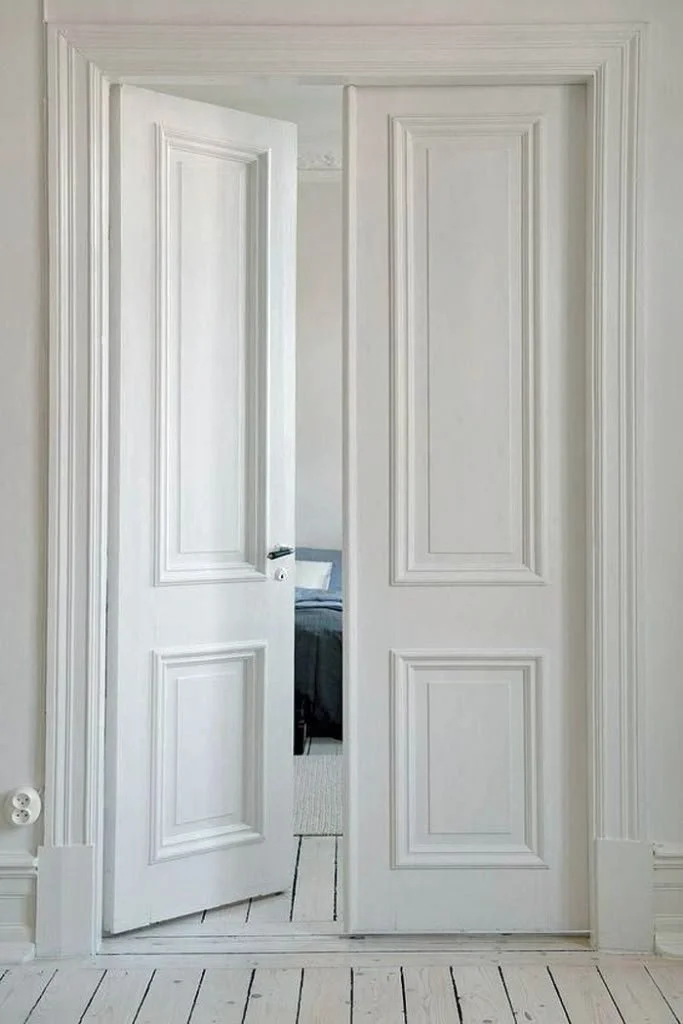Rules and Guidelines for Painting Doors
Painting doors can be a tricky design decision. One common dilemma is whether to paint the door the same color as the walls in the room or to go with a contrasting shade. The right choice can make a space feel more cohesive, elegant, or even dramatic. Here’s a guide to help you decide when to match the door to the room and when to break the rules.
1. The Rule of Seamless Design
A general rule in interior design is that painting a door the same color as the walls creates a seamless, cohesive look. This works particularly well in:
• Small rooms – Matching the door to the wall color helps the space feel larger and less visually cluttered.
• Minimalist designs – If you prefer a sleek, understated aesthetic, a monochromatic look enhances the clean lines of a room.
• Rooms with dark walls – A dark-colored door blending into a dark wall can create an elegant and moody atmosphere.
Exception: Highlighting Architectural Features
If your doors have beautiful trim or paneling, painting them the same color as the walls might make them disappear. In this case, choosing a slightly different shade or a contrasting color could be a better choice.
Image courtesy of Home and Garden magazine
2. The Rule of Transitioning Spaces
When a door opens into another room with a different wall color, you’ll need to decide which color to use. The standard rule is:
• The side of the door facing a room should match that room’s wall color.
• The edges of the door (the thin sides) should generally match the side that’s visible when the door is open.
Exception: Open-Concept Homes
If you have an open-concept space where one color flows into another, consider using a neutral shade on all doors to create consistency.
Image courtesy of Zoffany Paint
3. The Rule of Contrast for Statement Doors
If you want your door to stand out, using a different color from the walls can make it a focal point. This is a great approach for:
• Front doors inside the home – A bold color (like deep blue or mustard yellow) can add personality.
• Historic or character-filled homes – Contrasting doors highlight architectural charm.
• Rooms with neutral walls – A colored door can be an easy way to introduce vibrancy without overwhelming the space.
Image courtesy of Zoffany Paint
Image courtesy of Pinterest
4. The Rule of White Doors
White is a classic choice for interior doors because it:
• Works well with almost any wall color.
• Keeps spaces feeling bright and airy.
• Offers a clean and timeless appeal.
Exception: When White Feels Too Harsh
If your walls are a warm, deep, or moody tone, stark white doors might feel out of place. In that case, opting for a matching or complementary hue can create a more harmonious effect.
Image courtesy of Arrow Hill Design





